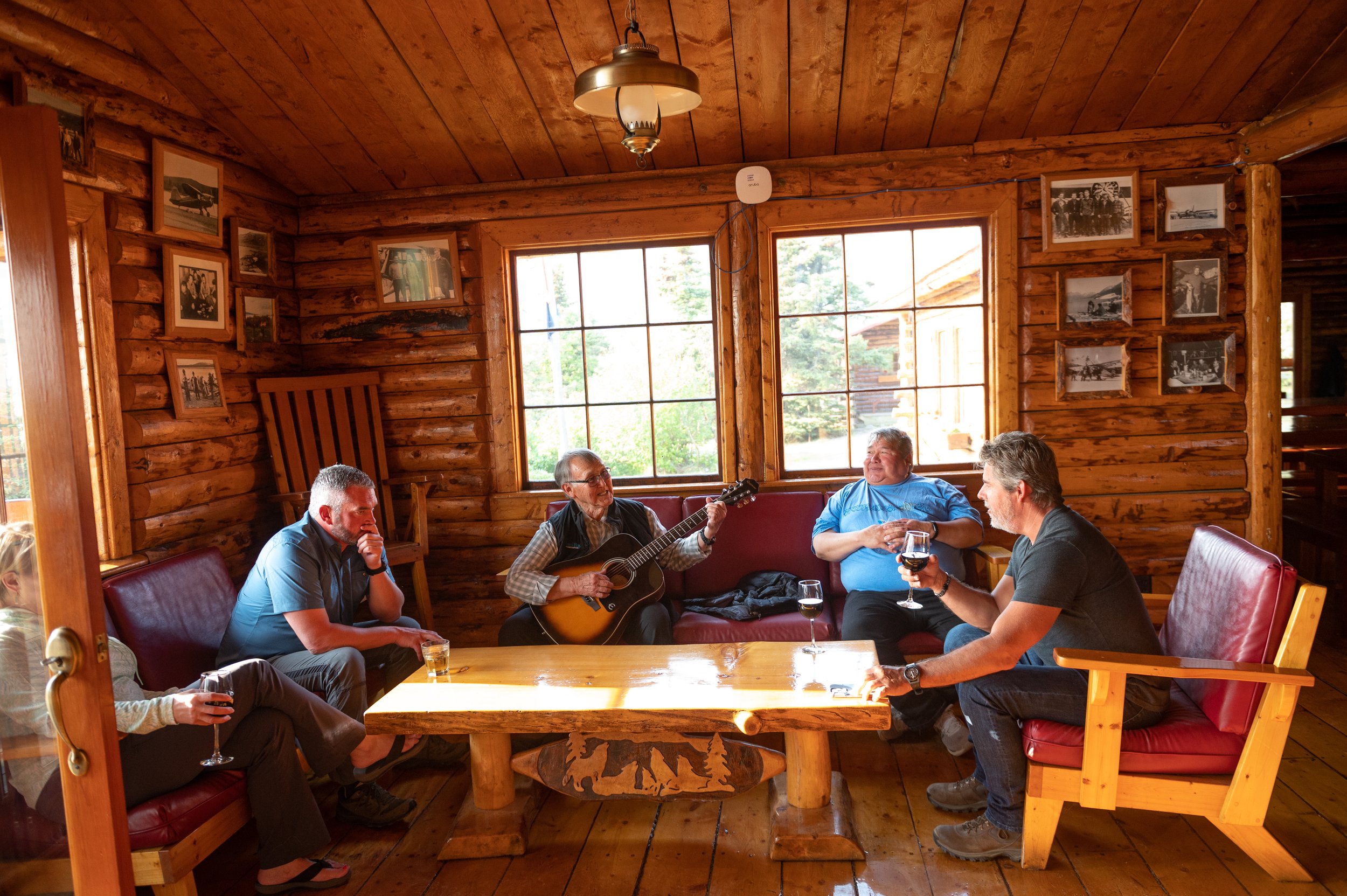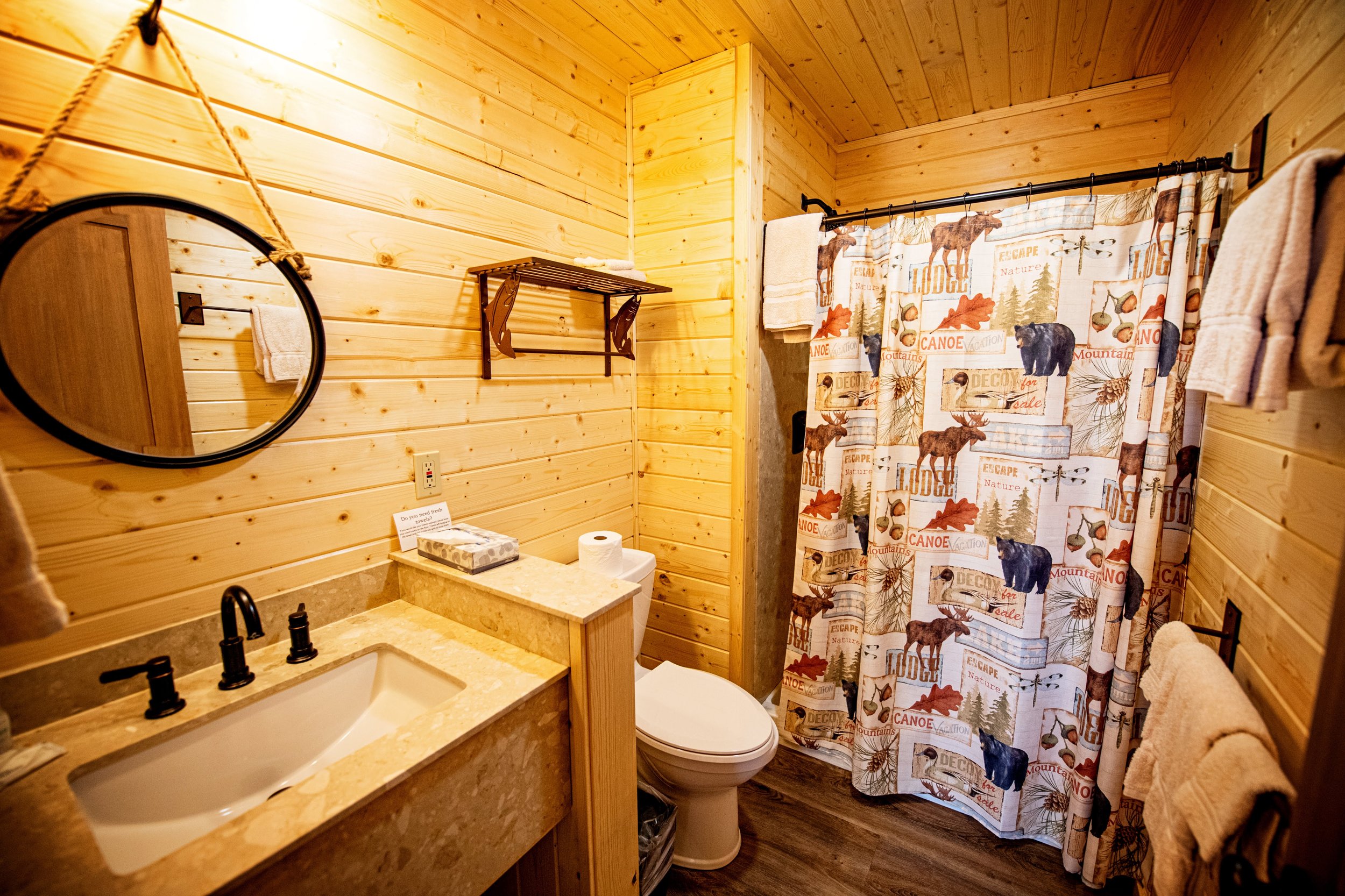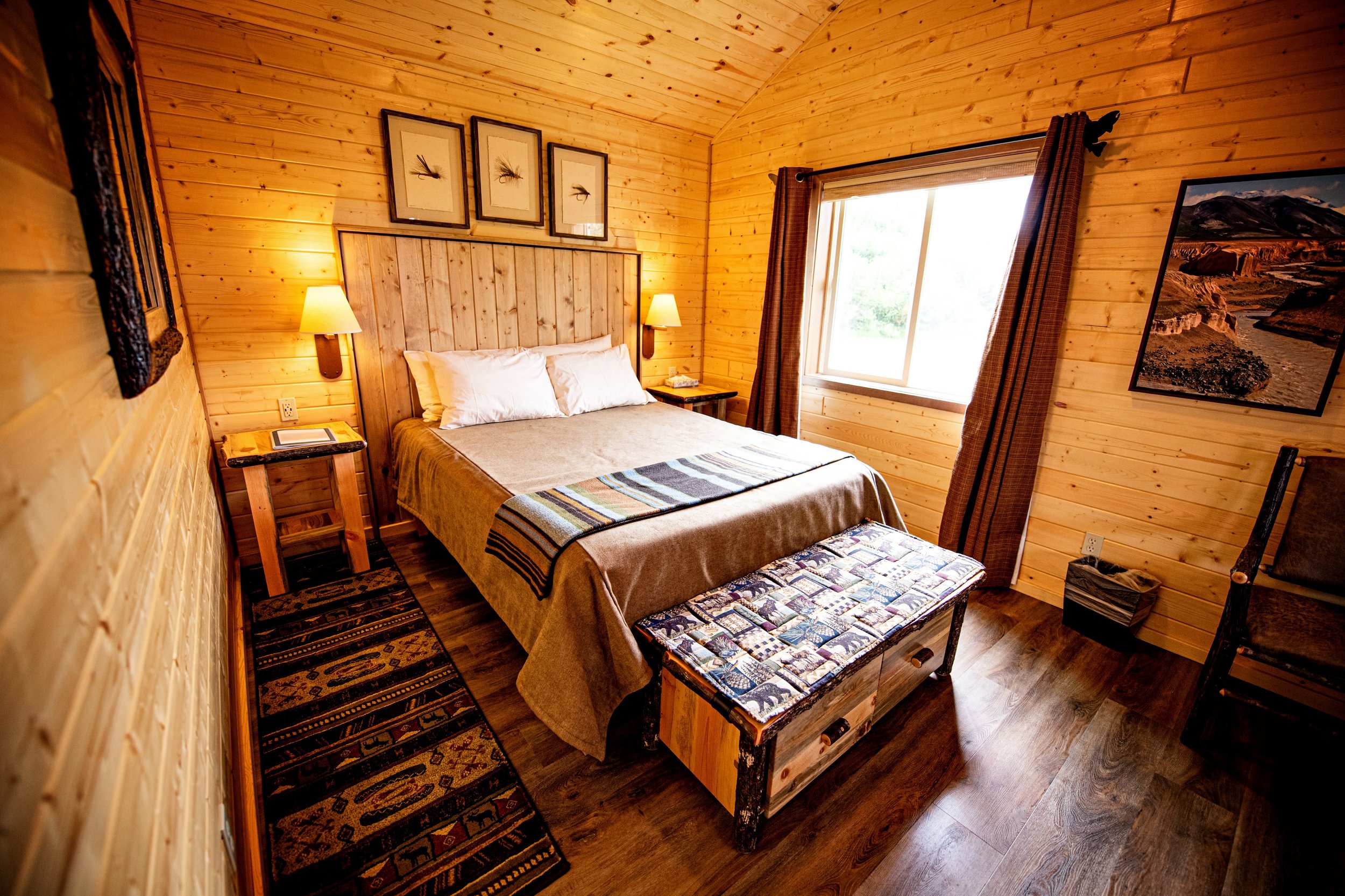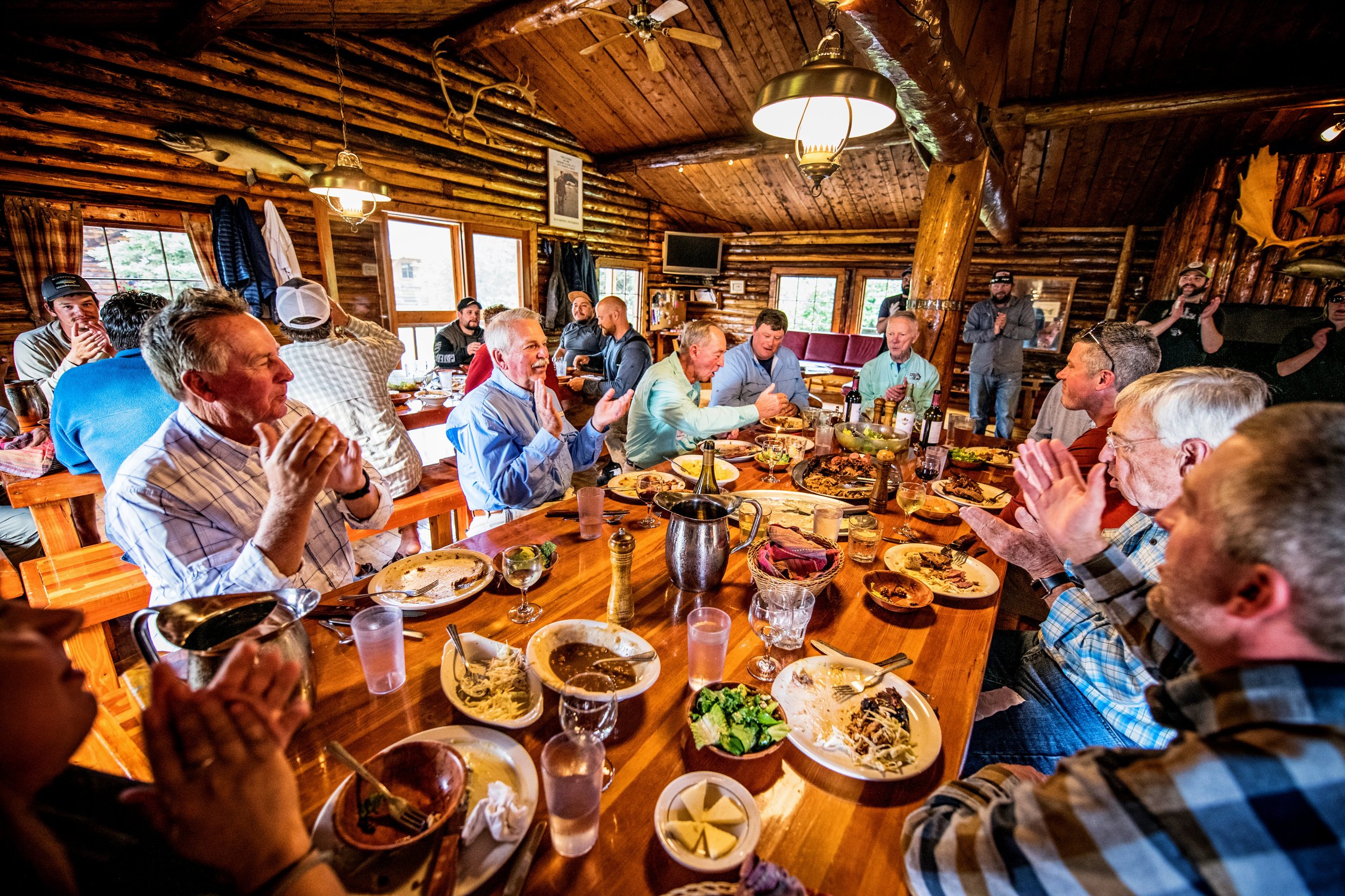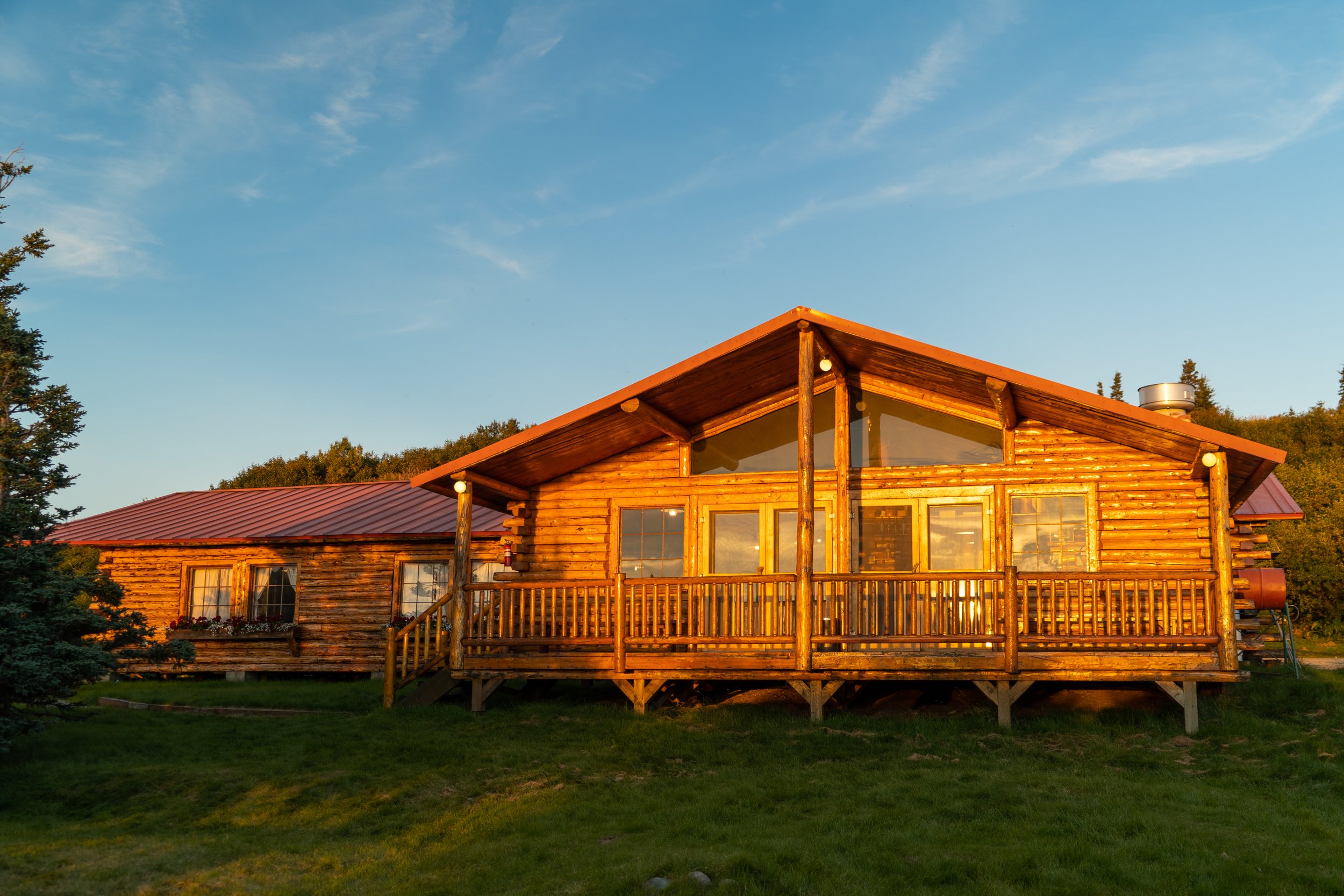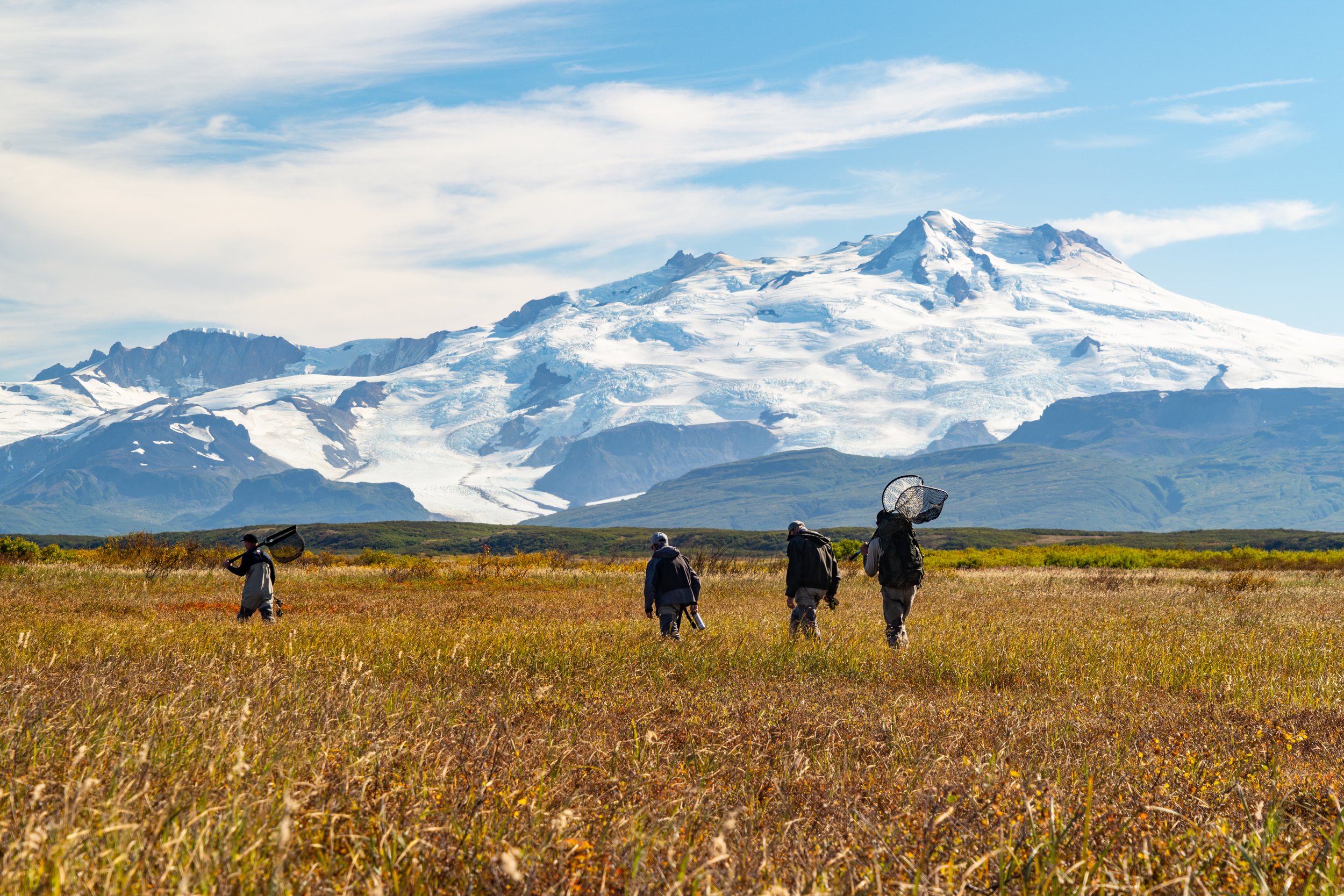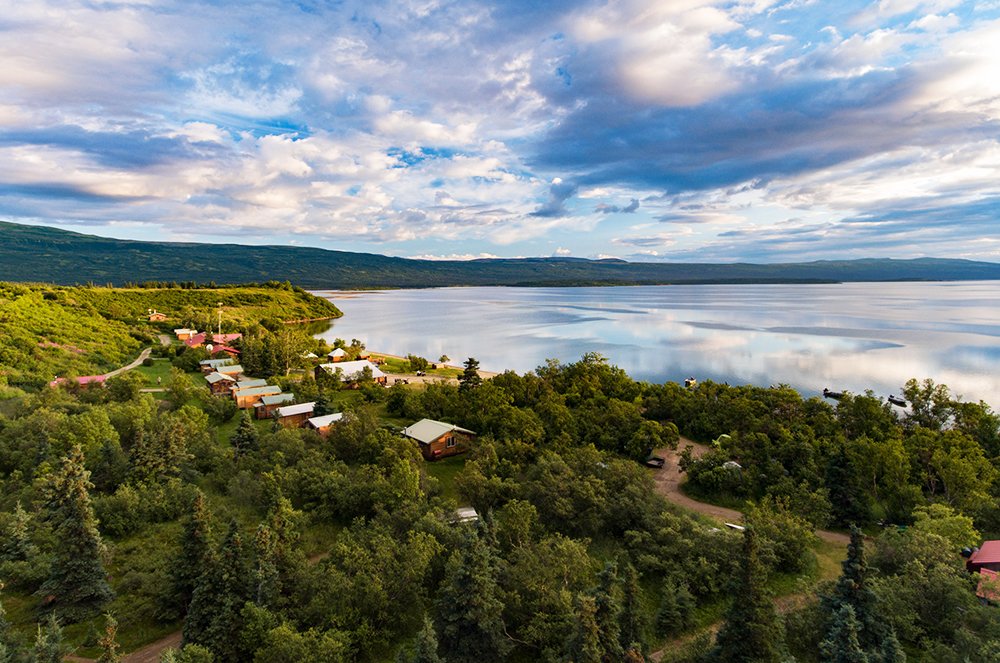Getting Here
Kulik Lodge is located in the Katmai National Park, a remote area of Alaska accessible only by air. Participants will need to secure their own transportation to Anchorage for the event. From there, charter air service from Anchorage to Kulik Lodge will be provided as part of the event package on Katmai Air. Transportation to Kulik Lodge from Anchorage will be aboard a pressurized PC-12 aircraft (approximately 1 hour.)
staying here
Bristol Bay Foundation negotiates rates for sponsor teams to stay at a discounted rate. This provides the best experience with Neqa in Bristol Bay activities. Kulik Lodge consists of 11 cabins right on the shore of Nonvianuk Lake, walking distance from the Kulik River, which connects you to Kulik Lake. Some amenities include, personal bathroom, showers, hot tub, and sauna. Click here to learn more.
Important Travel Tips
Per the requirements of the lodge, be sure to get your Alaska fishing license before you arrive.
Pack important items (medications, change of clothes, etc.) in your carry-on.
what to bring
Comfortable, medium weight sport clothes are the norm. While fishing or hiking we recommend that you dress in layers to regulate your body temperature with the whims of the weather. Expect temperatures in July and August to average 55-60 degrees Fahrenheit with fluctuations varying from 40-75 degrees Fahrenheit. June, September, and October can be much cooler and wind chill can drop temperatures as much as 30 degrees. Extra warm clothes are recommended for these months.
The baggage weight allowance for each guest staying at Kulik is 50 lbs. per person. Your clothing and gear should fit into at least two small, soft-sided bags and a rod case. Any excess baggage may have to be flown in at a later time, on a space available basis. However, storage is available at the office in Anchorage for items not required at the lodge.
The main lodge building does have wireless internet access and a computer is available at the lodge for internet use by guests that don’t have any other means to access the internet.
Essentials
High quality rain gear, a warm sweater or jacket, long-sleeved shirts, warm socks, fleece pants, and polypropylene or merino wool underwear (for use under your waders) is highly recommended. Cool morning boat rides and wet fishing days require warm hats and fingerless gloves.
Dry storage is also limited on their boats, so we recommend use of a waterproof ‘dry bag’ to store extra layers, camera equipment, and other items that you don’t want getting wet while on the water. Waterproof roll top backpacks are available for guest use at the lodge.
We also recommend comfortable walking shoes or boots for wearing around the camp (a waterproof pair is ideal). You may also want a swimsuit for the hot tub and sauna.
Guests should also bring their toiletries and other personal items. However, bedding and towels are supplied at the lodge.
Fishing Gear
Anglers should have line clippers, needle-nosed pliers, insect repellent, sunscreen, and polarized sunglasses. You can bring your own or purchase these items, along with various souvenirs, shirts, and hats in the small fly shop at the lodge.
We’re able to outfit all of our guests with the rods, reels, fly lines, flies, and terminal tackle (leader, tippet, split shot, etc) needed during your time on the water. However, for guests that would prefer to fish their own gear (heck, that’s part of the fun), we’d recommend the following.
Fly Fishing
Fly Rods and Reels. At minimum, we recommend a 7-weight rod for most fishing situations. Reels do not need to be the most expensive, but we recommend those with a reliable drag system. Sage rods and Ross Reels are available for guest use at the lodge.
Fly Lines. We recommend bringing both a floating and a fast sink-tip line and enough backing to fill the spool of the reel.
Leader and Tippet. We typically use 8 – 12 lb. test tippet material for most applications. A common exception is when dry fly fishing, in which case we often use a 7 1/2 to 9 ft. 3x – 4x tapered leader. A selection of 4 through 12 lb test tippet material should cover the majority of situations.
Flies. Fly selection generally depends on timing, but a well-stocked fly box generally consists of a selection of streamers (sculpins, leeches, fry, and other baitfish patterns), traditional dry flies (elk hair caiddis, adams, etc.), mouse flies, flesh flies, and salmon egg imitations (i.e. trout beads) in various sizes and colors.
Conventional Fishing
Conventional anglers should pack their favorite light or medium action rods and a good quality reel spooled with at least 8 lb test line. Expect to lose tackle to snags! We recommend bringing plenty of large spoons and spinners and extra terminal tackle including swivels. Almost any color combo will work, but we find silver and orange to be the most consistent producers.
Please note that only single hooks are permitted. All treble hooks must be replaced with singles or trimmed down to one hook. Also keep in mind that some of the waters we frequent (such as American Creek) are designated as fly fishing only by Katmai National Park regulations.
Waders
Kulik offer Simms, Redington, and Cabelas brand waders and boots for their guests to use during their stay (children’s sizes up to adult XXL waders and wading boots up to size 16 available). You can save some weight and bulk when packing by using their waders.
Some folks prefer their own waders and boots, however please note that felt soled boots are no longer allowed in Alaska. Boots with metal cleats are also not allowed at the lodge. A common compromise from Kulik guests is to bring their own waders but use a pair of their wading boots during their stay.
What Not to Bring
Please do not bring sleeping bags, towels, nylon landing nets, gaffs, creels, or any type of firearm. If you do bring bear mace, be sure to inform your pilot as it can’t be packed inside the planes. We do not recommend bringing bear mace.


